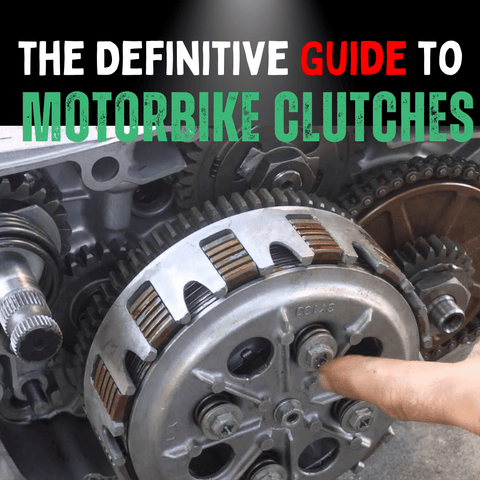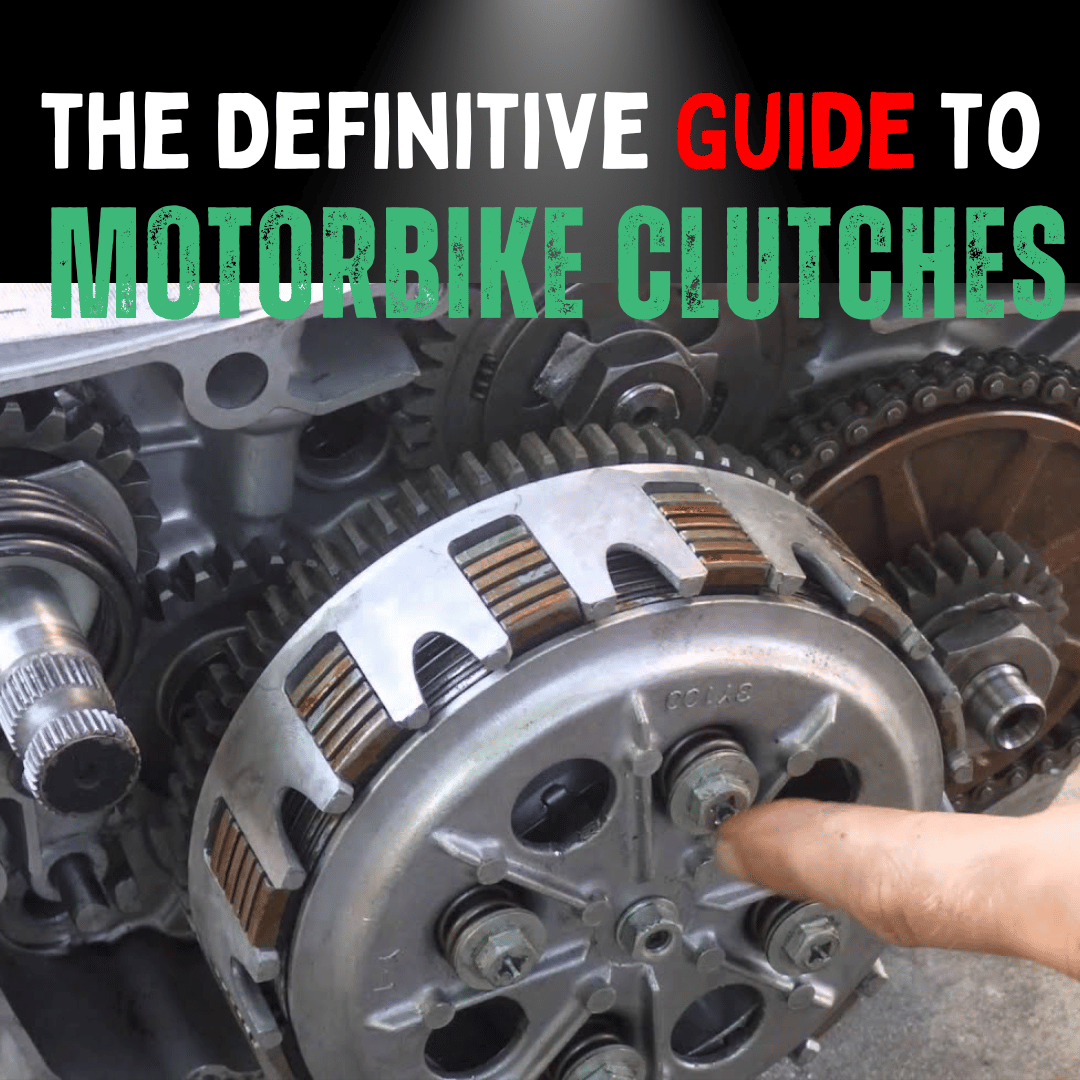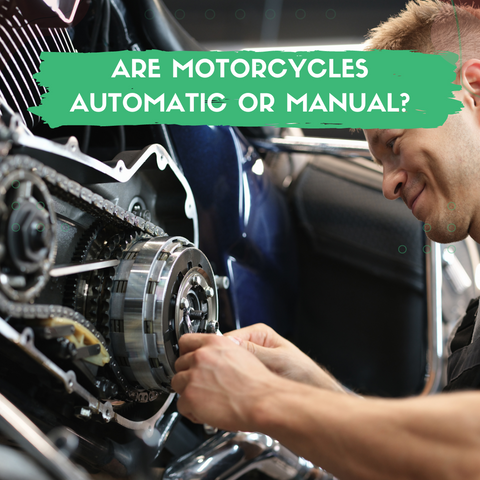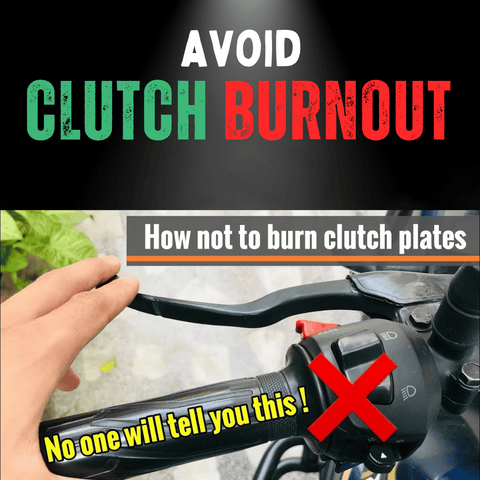
Published: September 13, 2023
Updated: March 26, 2025
Your motorbike’s clutch is key to its performance—whether you’re cruising or racing.
Let’s dive into the types, their uses, and how to choose the right one for your ride in 2025.
How a Motorcycle Clutch Works
The clutch connects the engine to the transmission, letting you shift gears smoothly.
When you pull the clutch lever, it disengages the engine from the transmission via the pressure plate. Release the lever, and power flows to the gears, driving the rear wheel.
Types of Motorbike Clutches

| Type | Description | Best For |
|---|---|---|
| Wet Clutch | Oil-lubricated for cooling | Road bikes |
| Dry Clutch | No oil, runs dry | Racing bikes |
| Slipper Clutch | Prevents wheel lockup on downshifts | High-performance bikes |
| Centrifugal Clutch | Engages with RPM | Scooters, small bikes |
| Hydraulic Clutch | Uses hydraulic fluid | Touring, heavy-duty bikes |
Clutch Types in Detail
1. Wet Clutch
Oil-lubricated for cooling, wet clutches reduce wear and ensure smooth operation.
Best For: Most bikes, especially road models like the Honda CBR650R for urban commuting.
2. Dry Clutch
Running without oil, dry clutches offer quick power transfer but are noisier.
Best For: Racing bikes like the Ducati Panigale V4 for track performance.
3. Slipper Clutch
Prevents rear wheel lockup during aggressive downshifts—great for braking.
Best For: High-performance bikes like the Yamaha YZF-R1 on track days.
4. Centrifugal Clutch
Engages automatically with engine RPM, ideal for beginners.
Best For: Scooters and small bikes like the Honda Grom for easy learning.
5. Hydraulic Clutch
Uses fluid for smooth, low-effort operation.
Best For: Touring bikes like the BMW R1250GS for long rides.
Related: Automatic vs. Manual Motorcycles.
Choosing the Right Clutch for Your Ride
- Off-Road: Wet multi-plate or slipper clutch for durability and control.
- City: Hydraulic or wet clutch for smooth stop-and-go traffic.
- Track: Dry or slipper clutch for quick power and stability.
- Touring: Hydraulic clutch for comfort on long rides.
- Classic: Cable clutch for an authentic vintage feel.
Match your clutch to your riding style for the best experience!
Clutch Materials
| Material | Characteristics | Best For |
|---|---|---|
| Ceramic | High friction, heat-resistant | High-performance bikes |
| Organic | Smooth engagement | OEMs |
| Kevlar | Durable, wear-resistant | High-performance bikes |
Choosing the Right Clutch

- Match Your Bike: Sport bikes may need a slipper clutch, scooters a centrifugal one.
- Riding Style: Off-road, city, or touring—pick a clutch that fits your needs.
- Consult Experts: Ask mechanics for advice tailored to your bike.
Maintenance and Troubleshooting
Tips
- Inspect Cable: Check for damage every 2.5 hours of use.
- Adjust Free Play: Follow your manual for proper cable adjustment.
- Check Plates: Replace worn clutch plates to avoid slipping.
Common Issues
- Slipping: Replace worn plates or pressure plate.
- Shifting Issues: Adjust cable or check transmission components.
Related: Avoid Clutch Burnout.
Future Clutch Innovations
Emerging Tech
- Honda E-Clutch: Automates clutch operation for smoother shifts.
- Rekluse EXP 4.0: Advanced auto clutch with better durability.
- Electromagnetic Clutches: Low-maintenance, efficient for scooters.

Conclusion
From wet to slipper clutches, each type offers unique benefits for different bikes and riding styles.
Choose wisely, maintain regularly, and enjoy a smoother ride in 2025!
FAQs
What are signs of a failing clutch?
Vibrations, shuddering, or slipping gears—check your clutch immediately.
Can a motorcycle run without a clutch?
Yes, for upshifts with practice, but it’s not recommended long-term.
What if I use the wrong clutch type?
It can reduce fuel efficiency, acceleration, and overall performance.
Can I customize my clutch?
Yes, aftermarket parts can enhance performance—match them to your bike.
Ready to Ride? 🚀
Loved “The Definitive Guide to Different Types of Motorbike Clutches?” Want more bike insights?
Visit RiiRoo.com or chat live with us for ride-on fun!







Share:
Do Pro Motocross Riders Use The Clutch in 2025?
How Does A Motorcycle Clutch Burn Out?